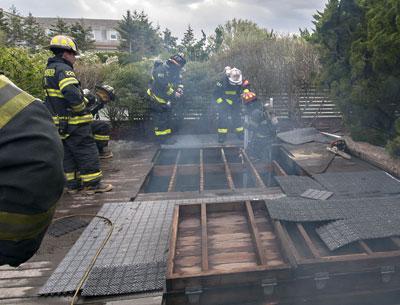Review Finds F.A.A. Money Not Needed for Airport
Review Finds F.A.A. Money Not Needed for Airport

The East Hampton Airport could be self-sustaining without Federal Aviation Administration funding, with enough income over the next five years to take on additional debt enabling needed capital repairs, an airport finance subcommittee reported to the East Hampton Town Board on Tuesday.
Acceptance of federal funds has been a key issue in discussions of the airport, as has the impact of the town’s contractual agreement with the F.A.A. upon taking the money, and its effect on the ability to institute local regulations aimed at minimizing airport noise.
“People have said the airport would fall apart if we don’t take F.A.A. funds,” said Supervisor Larry Cantwell after hearing the report. “This report shows that that is not true. It shows that we can finance the airport, we can keep it safe . . . and we can do that for some period of time without taking F.A.A. funds.”
Until now, the debate had pitted those urging the town to seek more autonomy from the F.A.A. against pilots and others arguing that without federal funds the airport would fall into disrepair and perhaps be forced to close.
Representatives of both sides were appointed to the airport finance subcommittee.
After three months of extensive research and analysis of airport income and expenses, including examination of various operating scenarios to determine if capital would be available to repay bonds issued for improvement projects, the committee was unanimous in its determination.
Based on continued growth of revenue and expense at rates approximately equal to the last five years — and even if revenues from landing fees were to decrease because of a curfew or reduction in helicopter traffic — the group concluded that there would be enough income to borrow at least $4.35 million this year, and up to at least $5.1 million within the coming five years.
Should the status quo continue (if there is no reduction in revenue from fees), the airport would bring in enough money to borrow up to $8.5 million within five years, Peter Wadsworth, a member of the committee, told the town board.
“Without addressing any airport policy issues, we wanted everybody to be working from the same data,” said Arthur Malman, chairman of the town’s budget and finance committee. The subcommittee’s findings, he said, will help the board to weigh the impact of airport operation and policy decisions.
Mr. Cantwell remarked on the unprecedented agreement among the various interests represented by committee members, saying their unanimity was “to their credit, and the credit of this committee. I couldn’t be more pleased that that’s happened.”
“Now, that doesn’t mean that there won’t be blood on the floor with respect to other airport issues,” he added quickly, referring to the longtime controversies. But, he said, “You’ve started a new beginning here.”
Councilwoman Kathee Burke-Gonzalez, who became the town board’s airport liaison upon taking office in January, took a new approach in appointing the two-headed financial analysis group and also two separate advisory committees, the one opposing noise and the other representing aviation interests. Those groups are engaged in other fact-finding missions, and will be making their own reports to the board.



